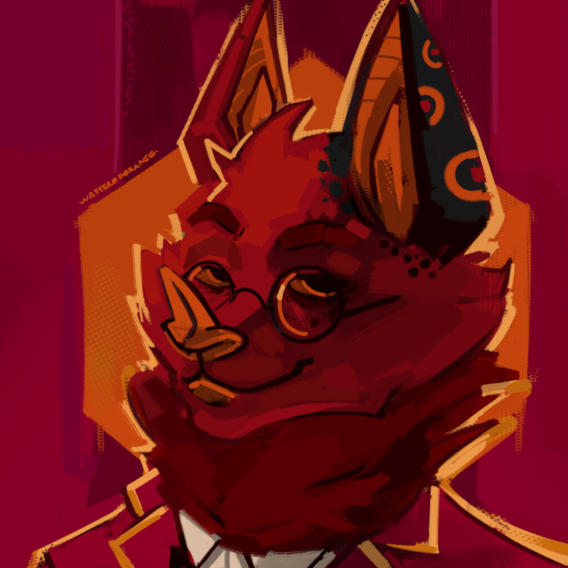The Rhythm Behind Elden Ring’s Soundtrack#
An Elden Ring boss fight is the digital equivalent of a dance: the careful maneuvering of two bodies around one another, each strike or swig of a flask timed perfectly to avoid interrupting the fast flow of combat. But every good dance needs energetic music, so composers Shoi Miyazawa and Tai Tomisawa harnessed the power of unusual time signatures to reinforce the lore, but more importantly to enhance the game’s feeling of movement.
Most popular songs are written in 4/4-time for the sake of approachability. It makes rhythms easier to follow and appeals to the listener’s instinctual search for order, but it can become predictable and repetitive over time. To generate drama, energy, and passion, stage performers often set dances to 3/4-time: the step and slide format of a waltz, for example, will be forever linked to this fast-paced time signature.
Godrick the Grafted#
Players may begin to notice this when they reach Godrick the Grafted, the first real boss they will encounter throughout the Lands Between. Godrick is the creator of the grafted soldiers scattered across the world, and he’s experimented on himself in much the same way, his body becoming a mess of haphazardly placed limbs as a result. He’s become an abrasive and imposing beast more than a demigod, which is reflected in his theme: the drums are noisy and overwhelming, with a highly dramatized choral performance and an abrupt second-phase switch in time signature to boot.
A low boom ushers in the other instruments at the start of the fight, and it reappears every third beat to maintain an imposing presence, calling attention to the 3/4-time signature. But it’s actually the violins and choir that carry the dance: they move gently and quickly through the rhythm and keep their footing.
In fact, the bellowing drums are more reminiscent of war songs, another common 3/4-time genre where percussion rhythms serve as the marching beat for a legion of soldiers and brass instruments as a triumphant call to battle.
This theme uses the percussions in a more erratic way, so they make Godrick out to be a one-man army: his mass of limbs makes him supposedly unwieldy, yet he still carries the speed, strength, and precision to demolish a foe who can’t keep up with him. This is further emphasized by the string instruments’ solo opportunities. The percussion occasionally makes space for a violin to perform a heroic solo tune, an aural manifestation of Godrick’s challengers. Yet the tendency for their melodies to fade under and transition into the choir signals their defeat at the hands of Godrick’s axe, and their desperate cries as they’re grafted to him, forced to wield the beast’s weapon against new challengers.
The theme for the second phase begins with a faster beat using the same 3/4-time, but it soon transitions to 7/4-time, a signature that’s often difficult for listeners to follow. This abrupt shift is paired with Godrick’s decision to graft a dragon’s head to his arm. The player will likely have encountered this enemy at this stage in the game but run away from it due to its strength, so its appearance as a boss’s appendage amplifies the player’s feelings of uncertainty in the second phase. Another change back to 3/4-time paired with the reappearance of the first phase’s melody appears to dispel this uncertainty. By the time the player has made it to this part of the track, they will have adapted to the phase shift and potentially figured out how to counteract it, so the theme almost serves to mock Godrick. It suggests that his attempts to strengthen himself through grafting are no more than a parlor trick when compared to the abilities of his demigod brethren – he’s stuck in the same combative dance no matter how beastly he makes himself.
Godfrey, First Elden Lord#
By the same token, the player is stuck in a similar kind of dance no matter how far they get into the game. Godfrey, First Elden Lord is one of the last bosses the player will fight, and he’s significantly more difficult as a result. He was a crucial player in the ancient war against the giants, and although he was exiled from the Lands Between at some point, he still shares a lot of similarities with its residents.
A rolling drum line introduces the fight, but it largely fades into the distance afterwards – instead of percussions establishing and maintaining the rhythm as in Godrick’s theme, it’s the brass and choir that do so. This suggests more competence, confidence, and control on the part of Godfrey, whom Godrick was trying to impress through his demonstrations of strength. The intermittent but quiet bell tolls also herald the death of the player, since bells are conceptually tied to funerary processions.
In the second phase, the theme strays from the choir to become much more reliant on the brass instruments as he becomes Hoarah Loux, Warrior and adopts a much more threatening demeanor. He throws every last bit of his strength into the fight, which makes the melody louder, but it also causes it to exhibit a descending pattern; Godfrey yearns to return to his home and family to fix everything, yet he recognizes that his death will come before he’s able to do so. As a result, the drastic melodic changes don’t throw off the 3/4-time.
Godskin Apostles#
Other residents of the Lands Between are also involved in this dance. The Godskin Apostles theme, for example, follows a 3/4-time signature, but it’s much more reliant on a high-pitched choir. It feels almost incongruous with the fast tempo – choirs are typically heard in prayer songs, which are meant to be gentle and contemplative. These qualities reflect perceived holiness of the apostles, but the choir’s forceful delivery on the first beat of each bar also shows their aptitude for violence and hatred of the gods. They also make much more use of bell chimes and cymbals to evoke death, but their ability to overpower the drums suggests their bloodlust is not directed at the player.
No matter that the apostles have an entirely separate objective from the world’s divinity, they’re still trapped in the dance of death that is the search for power. Their themes and those of the demigods share one common trait: they all come to a conclusive crescendo before fading out. They will inevitably all be felled by the Tarnished, and the dance’s end will be met not with rousing applause, but the lone cheers of the player. This is where the 3/4-time’s significance makes itself known: though it contributes to a better understanding of the lore in some instances, its dance-like quality exists outside the world itself, acting largely as an additional sensory tool for the player to time their attacks.

